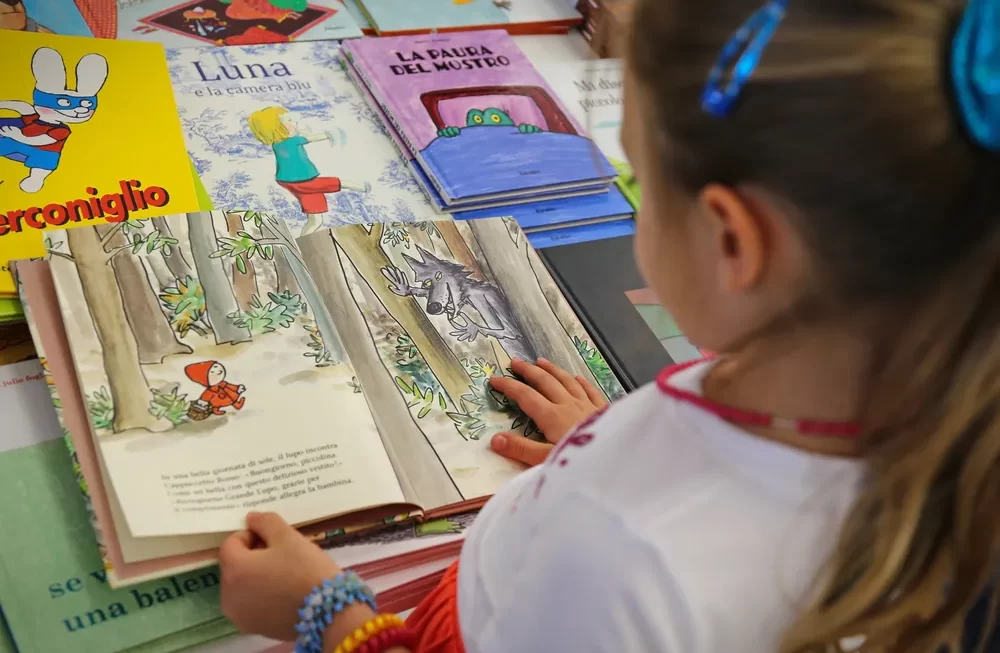Table of Contents
Illustrated books help children navigate challenging topics by combining engaging visuals with thoughtful narratives, creating a safe space for understanding. The artwork complements the text, making complex issues more accessible and relatable. This blend fosters emotional expression, encourages empathy, and helps kids process difficult emotions, offering guidance and support during tough times. These books serve as valuable tools for communication, building resilience, and promoting healthy emotional development in young readers.
Introduction
As children grow, they encounter a myriad of challenging topics, from understanding their emotions to grappling with societal issues. These subjects can be complex for young minds, but illustrated books provide a unique tool to help them navigate these complexities. Whether breaking down the nuances of a presidential debate children’s book or exploring emotional intelligence, illustrated books bridge comprehension and visual engagement, making daunting topics more approachable.
Illustrated books merge the art of storytelling with visual elements, creating narratives as entertaining as they are educational. These books help children visualize scenarios that might otherwise seem abstract or intimidating, thus making the connection between known concepts and new ideas much more achievable. Let’s delve deeper into why illustrated books benefit young readers encountering complex topics.
The Power of Visual Storytelling
Visual storytelling holds excellent potential in communicating with young audiences. Combining text and images can simplify complex ideas, making them more digestible. This multimedia approach helps children engage more deeply with the narrative as they read, see, and feel the story. Illustrated books break down barriers to understanding by making abstract concepts tangible through art. This method promotes comprehension, as children use the visual clues to understand better and relate to the narrative, thus enriching their reading experience. Get More Information: Whose famous picture is Mother Teresa?
Development of Emotional Intelligence
Children’s literature featuring illustrations offers a safe space for young readers to explore a range of emotions. These narratives provide models for expressing and understanding feelings in various situations. The stories portray characters experiencing and dealing with different emotions, allowing children to see reflections of themselves in these characters. This exposure is crucial for developing emotional intelligence. Children can develop lifelong abilities to help them identify and control their emotions by observing how characters deal with their emotional difficulties.
Facilitating Conversation
Illustrated books are invaluable tools for facilitating conversation between children and adults. The art and stories provide a neutral ground for discussing complex subjects, serving as a catalyst for meaningful dialogue. As adults read these stories with children, they can pause and discuss the themes and challenges presented in the story. The visual aspects of these books offer concrete examples that can aid in explaining abstract concepts and addressing any confusion children might have. This interaction not only aids in the child’s understanding but also strengthens the bond between the child and the adult.
Cultural Awareness and Diversity
The modern world is a tapestry of diverse cultures and perspectives. Illustrated books often reflect this diversity, presenting children with stories that showcase a variety of backgrounds and experiences. Exposure to cultural diversity through these books encourages children to celebrate differences and similarities among people. Through these stories, children learn acceptance and empathy, vital skills for thriving in a multicultural world. Visually transported to different cultural settings enriches a child’s worldview, laying a foundation for respect and understanding.
Overcoming Fears and Anxieties
Many illustrated books address common childhood fears and anxieties in a gentle, approachable manner. Stories can serve as metaphors for facing fears, often showing how characters overcome challenges. This portrayal helps children identify with these situations and understand strategies to cope with their fears. The book’s visual elements provide reassurance and validation, showing the child they are not alone in their struggles. As children see characters triumph over adversity, they gain confidence and hope, believing they, too, can conquer their fears.
Educational Applications
Illustrated books are not only for entertainment but also potent educational resources. They can make learning across disciplines like history, science, and literature more engaging. These books can bring subjects to life by contextualizing lessons within a narrative. They give kids textual and visual cues that help them understand complex subjects and make learning fun. Educators can leverage these educational tools to enhance critical thinking and comprehension among their students, making education an immersive experience.
Also Read: What Are Arborist Education Requirements for a Career in Arboriculture?
Building Reading Comprehension Skills
Illustrated books are essential in fostering reading comprehension skills. Children learn to decode multiple cues by engaging with text and images simultaneously. This dual interaction enriches literacy, helping young readers to interpret stories on various levels. They build the ability to infer meaning and grasp subtleties in the narrative, skills that extend beyond mere text comprehension. These books nurture lifelong readers by captivating a child’s attention through rich illustrations and vibrant stories.
The Journey Through Graphic Novels
Graphic novels represent an evolution of illustrated books, catering mainly to older children and adolescents. These books offer intricate storytelling paired with visual artistry, making them ideal for tackling complex themes. Graphic novels can address real-world issues in a relatable context, bridging the gap between childhood stories and more complex literary genres. The variety and complexity of subjects covered in graphic novels foster a smooth transition into mature literature by challenging older kids to think critically while keeping them interested.




